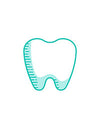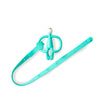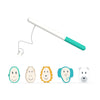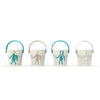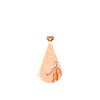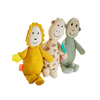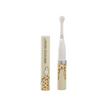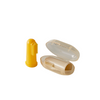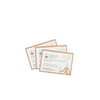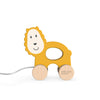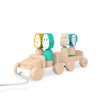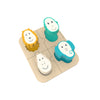Weaning Stages from 0-2 years
Weaning can be an incredibly exciting time for both you as a parent and for your little ones as you introduce them to a world of new tastes and textures. Your baby’s first tastes can shape their future relationship with food, so it is a good idea to introduce them to a variety of nutritious foods at their own pace.
What is weaning?
Weaning your baby is simply the process of slowly introducing solid foods to your little one’s diet to complement milk feeding. It is an exciting part of your baby’s development and an essential one. At around 6 months your little one will gradually begin to need more than just milk to satisfy their appetite so you will begin to introduce solid food to get all the nutrients they need to grow big and strong.
What are the stages of weaning?
The guide below indicates the 3 stages of weaning; however, this can look different for each child. The most important thing is to introduce new flavours and textures to your little one when they are ready. If your baby is showing all the right signs before they are 6 months, it is best to consult with your health visitor for the best advice.
Let us delve into each stage in a bit more detail:
Stage 1 - Introduction of solid foods – from around six months
This first stage is all about first tastes and letting your child explore the textures and flavours of food. At this stage, your baby will only be eating very tiny amounts of food, maybe one or two spoonfuls and their daily intake of milk will not decrease by very much. It is ideal to start with soft, cooked vegetables for example carrots, pureed peas, and butternut squash. For now, it is just about getting your baby used to the sensation of solid food and learning how to move that food from the front to the back of their mouths and then swallowing.
Stage 2 - More textures and tastes – from around seven months
Once your baby has mastered smooth pureed food, the next step is learning how to chew foods with a little more texture. For example, foods that have been mashed, meats that are cooked slowly so they are soft or soft finger foods.
Breakfast cereals are a great way to encourage a chewing movement and fresh fruit cut into long finger shapes or strips of vegetables will also help them with hand and eye coordination.
Stage 3 - Wider variety and family food – from 9-12 months
At this stage, you can start to give slightly harder and crunchier finger foods to your baby, such as raw vegetables and breadsticks. Try to offer as many vegetables and other savoury options as you can so that your baby is exposed to many different flavours and textures. Toddlers at this stage also like fun shapes that will help keep them entertained as they become more independent while feeding themselves.
At this stage, your little one will see you eating as a family so this is a great time to include them with your breakfast, lunch, and dinner routine. Just be aware that a child’s diet does differ slightly from an adults so offer them foods that are higher fat versions of milk, cheese, and yogurt. Take note that processed foods like ham, bacon, and sausages will be quite high in salt content so keep these to a minimum.
12-24 months
Your little one will be at the stage where they can eat what you are eating and know the differences between what they like and what they don’t. They will be able to use a cup and swallow food well with good jaw movement and will be working towards scooping food with a spoon and stabbing food with a fork.
Little one’s love being involved in the process of weaning, from taking part in the shopping, helping with the cooking, and selecting what they want to eat. Each weaning journey is unique so enjoy those moments of fun together.
Related Blogs:

